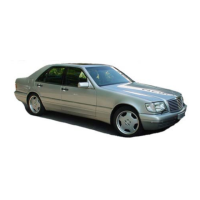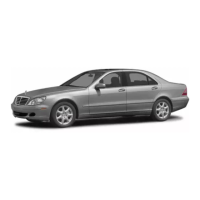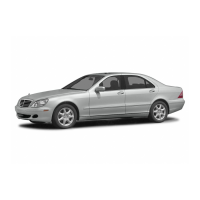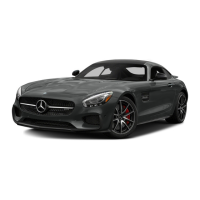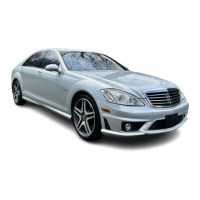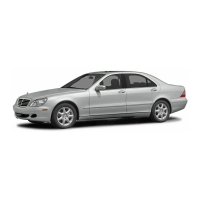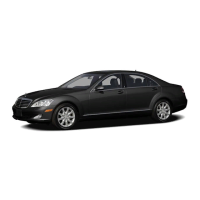33
Safety
Occupant safety
The most important restraint systems in
the vehicle are the seat belts and restraint
systems for children. In the event of a col-
lision, they are the most effective means of
restraining the movement of vehicle occu-
pants towards the impact force and thus
reducing the danger of them hitting parts
of the vehicle interior.
G Risk of injury
Modifications to or work performed incor-
rectly on restraint systems (seat belts, an-
chorages, belt tensioners, belt force limiters
or airbags) or their wiring, as well as work on
other networked electronic systems, may
prevent the restraint systems from working
correctly. Airbags and belt tensioners could
fail, e.g. in the event of an accident in which
the deceleration forces are sufficient to trig-
ger the systems, or they could be triggered
unintentionally. Never carry out any modifi-
cations on the restraint systems. Never
tamper with electronic components and
their software.
G Risk of injury
Airbags provide additional protection, but
are not, however, replacement for the seat
belts. To reduce the risk of serious or fatal
injuries, make sure that all occupants – in
particular, pregnant women – wear their
seat belt correctly at all times and have
adopted a normal sitting position, and that
their seat is positioned as close to the verti-
cal as possible.
Seat belts
G Risk of injury
A seat belt which is not worn, which is worn
incorrectly, or which has not been engaged
in the seat belt buckle correctly, cannot per-
form its intended protective function. Under
certain circumstances this could even cause
severe or fatal injuries. Make sure that all
vehicle occupants – in particular, pregnant
women – wear their seat belt correctly at all
times.
You must make sure that the belt:
앫 is routed as low as possible across your
pelvic area, i.e. across your hip joints
and not across your abdomen
앫 fits closely
앫 is not twisted
앫 is routed across the middle of your
shoulder
앫 is not routed across your neck or under
your arm
앫 fits closely across your pelvic area, by
pulling upwards on the shoulder section
of the belt
Do not secure any objects with a seat belt if
the seat belt is being used by one of the ve-
hicle’s occupants.
Avoid wearing bulky clothing, e.g. a winter
coat.
Do not route the belt strap across sharp-
edged or fragile objects, especially if these
are on or in your clothing, e.g. spectacles,
pens, keys, etc. The seat belt strap could be
damaged and you could be injured.
Only one person should use each seat belt
at any one time.
On no account should children travel in the
vehicle while sitting on the lap of another oc-
cupant. It would not be possible to restrain
the child, and the child and other vehicle oc-
cupants could be injured seriously in the
event of abrupt braking or even fatally in the
event of an accident.
컄컄
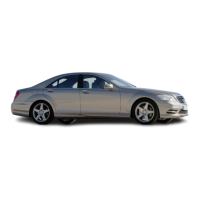
